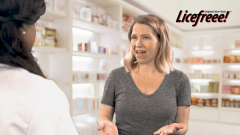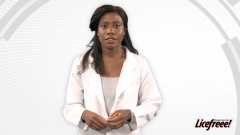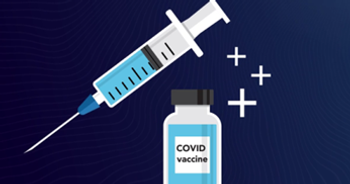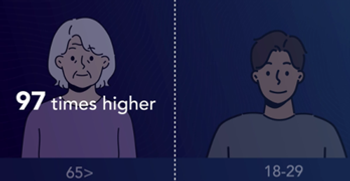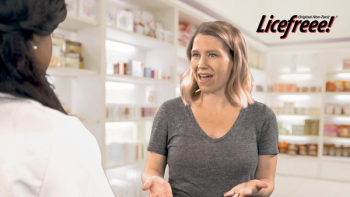
Pharmacist Consultation – Important Points to Convey Regarding Head Lice and Treatment
Parent stops by the pharmacy to ask the pharmacist for advice on their daughter’s head lice infestation treatment and management. The pharmacist recognizes this is an area parents often need a lot of support, and proceeds with conveying some important information during the consultation.
Pharmacist (introduction): When people hear about head lice, some might start to itch, and others might laugh at the person that began itching themselves. And true, it’s not life threatening. It might not even be life altering. However, it is an uncomfortable topic to discuss. And because there are several treatment options available over-the-counter, people don’t even need to speak with us about it if they don’t want to. But this is an area parents often need a lot of support. There’s a lot of shame associated with it. There’s a lot of work associated with it. And it could lead to a lot of anxiety. This is bigger for them. And if given the opportunity, there are some things that are really important to convey to them during a consultation.
Pharmacist: Hi there Mrs. Peterson, is there anything I can help you with today?
Consumer: Yes, PLEASE! My daughter, Christina came home from day care with a note that someone in her class had lice. I hadn’t noticed her scratching her head or anything out of the ordinary, but after reading the note, I checked her head and the poor thing has lice in her hair. It’s a mess. Everyone in the day care has to be checked and treated. Now I’m here looking to see what the options are and I would really appreciate your help. This is all new to me.
Pharmacist: I’m so glad you came to me. It’s unfortunate, but so many people are too embarrassed to ask for help and end up having trouble getting rid of the lice. Lice has such a stigma associated with it and it shouldn’t.
Consumer: I must admit, I do feel a bit of anxiety about it all. I just don’t understand how she could have gotten it. My home is spotless, and I make sure my child is clean!
Pharmacist: It’s a common misconception that having lice is related to being unclean, but it’s actually not true. Personal hygiene has nothing to do with getting head lice. Lice are a parasite, which means they feed off of a host, in this case a person. They are attracted to blood. They spread very easily from person to person through head-to-head contact or head contact with personal items (such as a hat, towel, or hairbrush) recently used by someone that is infested. Although I understand that the thought of Christina having head lice causes you some anxiety, just know that many school-aged children contract lice and that we can do something about it.
Consumer: Thanks. That makes me feel a bit better. Honestly, I just want to get rid of it and fast.
Pharmacist: No worries, Mrs. Peterson, I can definitely help you out with that. Have you tried anything thus far or have anything in mind?
Consumer: Well, I searched online for head lice home remedies and came across stuff talking about mayonnaise and essential oils, and it just sounds so messy and honestly a bit silly. Plus, I don’t even know if Christina may react to those essential oils. I’ve never tried them on her before. That’s when I decided to come here and see what options were available at the pharmacy.
Pharmacist: I understand. Not much is known about how well those home remedies work, and they can be tedious and time consuming. As far as over-the-counter treatments, there are really two types. There are the more traditional treatments that kill lice with strong chemicals that you apply to your child’s hair. The chemicals aren’t very good at getting rid of the nits, though, and that’s a very important part of preventing lice from coming back.
Consumer: Oh, that sounds awful. But, what are nits?
Pharmacist: Oh! Yes, nits are the eggs lice lay in the hair. There are actually 3 stages in the lifecycle, the egg or nit, the nymph, which is an immature louse, and then the adult louse. You can treat at any stage, but if either lice or nits are left untreated, the cycle repeats itself and reinfestation occurs. So, it’s very important that whichever treatment approach you choose has a way of getting rid of both lice and nits. In the case of the traditional chemical methods, combing with a nit comb afterwards is required to remove the eggs.
Consumer: Ugh, I don’t know about all that. I doubt Christina will sit still for that long and can’t imagine those chemicals are safe for kids. What else is there? Anything chemical-free or natural that I could try?
Pharmacist: You are right that there could be some unintentional side effects with the chemical treatments, including the potential to negatively impact neurons. There are a number of chemical-free, natural products on the market, which would address your concern about safety. However, the active ingredient in some are essential oils, so that might not be the best fit in this case. Still, the active ingredients in others include occlusive agents such as dimethicone. Unfortunately, most don’t get rid of nits, so you would still have to use the nit comb after treatment. Given your concern that Christina is unlikely to tolerate the tedious process of nit combing, you may want to consider a product called LiceFreee!. It comes in a spray form but is also available as a gel. It works differently than the other non-chemical treatments. It kills both lice and eggs by dehydrating them, or getting rid of all the water in their bodies, which causes them to die. The main ingredient is sodium chloride.
Consumer: Sodium chloride? As in salt?
Pharmacist: Haha, yes, as in salt, but not the kind you eat. Remember, this is a spray formulation. It has undergone testing and have been proven to work when used as directed. Just pouring salt on your daughter’s head or feeding her a lot of salt isn’t the same thing, and it could actually harm her. In clinical studies, LiceFreee! was better at killing lice than a traditional chemical product.
Consumer: OK, I see. And you said that it was a spray? That sounds easy. Would I still have to use that comb afterward?
Pharmacist: No, that’s the beauty of it. All you have to do is shake the bottle well; hold it about 4-6 inches from Christina’s head; spray on her DRY hair and entire scalp, starting at the hairline and working inward toward crown; make sure to thoroughly saturate all hair and scalp; and allow the product to air dry naturally. Once hair has dried completely, you may resume normal grooming habits. Dead lice and nits may be removed with a fine-toothed comb, if desired.
Consumer: That sounds doable. I think I’d like to try that.
Pharmacist: Yep, it’s a pretty good option. There are product instructions and a demo video posted on the LiceFreee! website if you need a refresher or have any questions. There’s also a nifty phone app.
Consumer: Great! Now, is there anything else that I should do? We have two dogs at home, Polly and Maggie, and Christina plays with them often. Should we treat Polly and Maggie as well? What about my husband, Frank, and I?
Pharmacist: The types of lice that infest humans do not live on dogs, cats, and other pets, and the type of lice that live on animals do not infest humans. So, no worries there. As for Frank and yourself, head checks should be performed on every family member in the household and treatment given only to those who are infested.
Consumer: Whew, that’s a relief. Well, I should be heading back home. I want to get started on this treatment as soon as possible. Thank you, Charlie, for all your help. I really do appreciate it and I feel a lot better now.
Pharmacist: You’re very welcome Mrs. Peterson. That’s why I’m here. Let me know if you have any more questions or concerns. Tell Frank and Christina that I say hello.
Consumer: Will do, Charlie! Thanks!
Newsletter
Pharmacy practice is always changing. Stay ahead of the curve with the Drug Topics newsletter and get the latest drug information, industry trends, and patient care tips.

